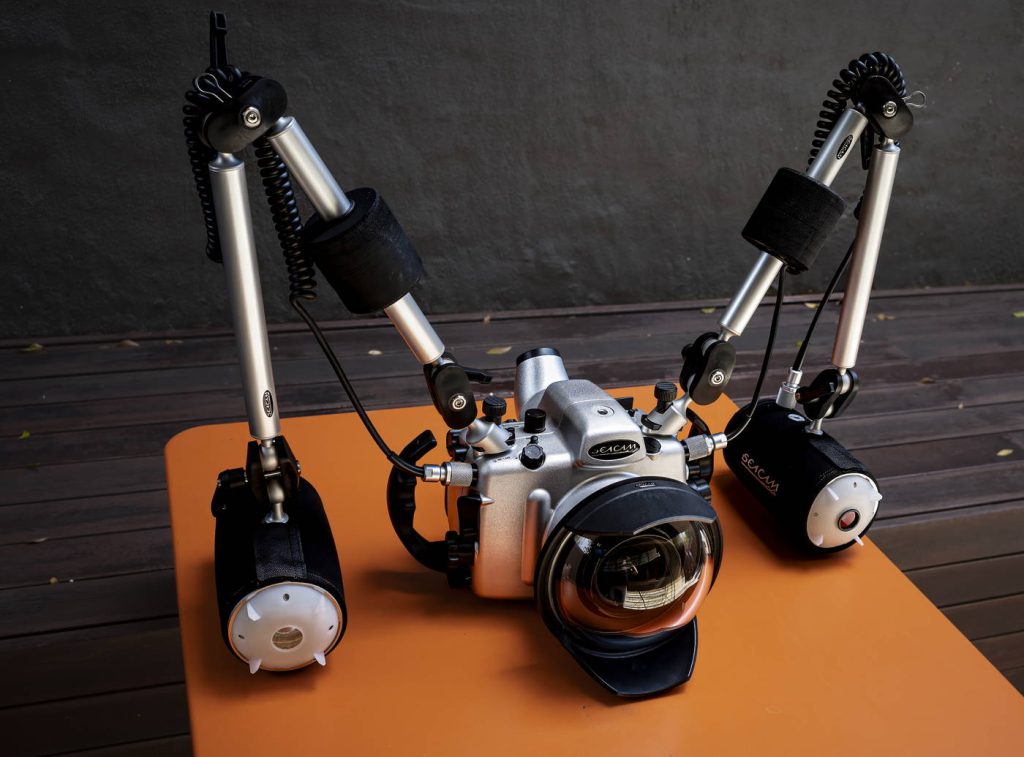Switching to SEACAM… In late 2023, a remarkable series of events aligned for me, leading to a formal association with SEACAM. The Austrian company I have always regarded as the Rolls-Royce of underwater photography equipment.
Even now, the reality feels surreal – I never imagined I’d be affiliated with such a prestigious brand.
Yet, in February 2024, I found myself traveling from Sydney to Austria to receive the equipment I had requested, followed by three days of intensive technical training. The entire experience was extraordinary – so much so that I felt compelled to document my journey with SEACAM. `
This initial article will focus on my first impressions, but first, let me explain how I got here.
Switching to SEACAM – How I Got to Here…
My journey with scuba diving began in 1978 when I first learned to dive. And my lifelong passion with underwater photography began in 1984 when I bought a Nikonos III. Followed a few years later with a IV, and eventually a V.
While I wouldn’t claim to have mastered underwater photography with film. I did manage to have my first illustrated article published in 1989, featuring images captured with those early Nikonos cameras.
I housed my first SLR (Nikon F801) in a Subal housing in 1994 and used Subal for the next 17 years as I progressed through the first DSLRs and finally to a D700.
In all probability I would have stayed with Subal had I been able to get the housing for the D800 I was upgrading to. But I couldn’t, and timing forced me to switch to Nauticam for the D800 in 2012.
Since then, I have had several Nauticam housings up to and including the NA-D850.
Overall, I was happy with Nauticam at the housing level and appreciated the improvements they made with their haptics over the years.

Although I was less enamored with the price increases… What really impressed me though were the developments Nauticam made with their water-contact optics, and I was using the WACP-1, WACP-C, and the EMWL system with 160° and 100° lenses with my NA-D850.
Nikon Z8
Switching to SEACAM also marked my transition to mirrorless underwater. Sticking with the D850, as excellent as it is, wouldn’t have made sense with a new housing.

I’ve been using the Nikon Z series (Z6 and Z7) for my landscape photography for a few years and have been impressed with their performance, particularly the stellar optical quality of the 2.8 S zoom lenses.
However, I wasn’t convinced they were ready for prime time underwater as the autofocus was a bit lacking.
The Nikon Z8 changed that. When I departed for Austria, in my camera bag was a new Nikon Z8 paired with the FTZ II adapter, along with my Z14-24mm, Z14-30mm, and F8-15mm zoom lenses, alongside my F60mm and F105mm macro lenses, which would be my core SEACAM kit going forward.
Understanding SEACAM
Before I quit full-time work at the end of 2019 (just in time for the pandemic…) to focus on underwater photography and photojournalism. I spent 25 years working for a US-based technology company. Prior to that, I worked in the oil and gas industry, primarily in the Middle East.
The point being, I have been exposed to and part of high-end, advanced technology manufacturing and utilization for many years. My favorite part of all that was always the factory visits and the chance to ask about how new technology had been conceptualized, developed, tested, and deployed with the people who had done it.
One thing that always came over to me during those encounters was the incredible passion and commitment to develop a vision and make it happen. So, I was really looking forward to visiting SEACAM and understanding how they do what they do.
Understanding Harald…
SEACAM is a family-owned business based in Voitsberg, southern Austria, about 20 km from Graz – the country’s historic second city, known for its excellent educational and research institutions, strong industrial sectors, and a robust automotive industry.
Founded in 1989 and led by Harald Hordosch, SEACAM’s business model focuses on designing its products in-house. And then utilizing the high-end engineering and manufacturing facilities in Graz to produce all key components.
Those components are then assembled, tested, and shipped from Voitsberg.
A good example of SEACAM’s process is the development of the housing for the Nikon Z8.
Harald Hordosch secured a pre-release camera body from Nikon Austria, which was 3D-scanned in Graz.
Then, using in-house CAD (computer-aided design) software, the housing was designed around the 3D model. Once complete, the design was transmitted to a Graz-based machine shop and programmed into a state-of-the-art CNC (computer numerical control) milling machine.
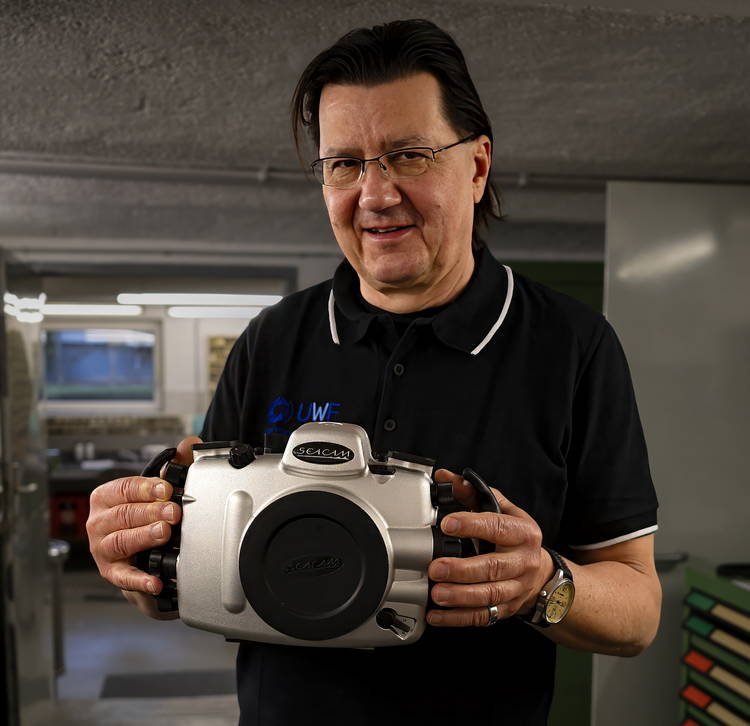
CNC machines are incredibly complex, highly automated, and extremely expensive examples of modern technology at their very best. Once programmed, they transform raw metal into precisely crafted components with minimal human intervention. Programming and setting up these machines requires exceptional technical expertise. But once perfected, they enable the production of exact replicas with remarkable efficiency. It’s somewhat like making sausages, but each one is identical in size, shape, and form.
While SEACAM’s proximity to Graz ensures access to some of the highest-quality production techniques. What truly sets the company apart is Harald Hordosch’s incredible attention to detail and commitment to creating exceptional haptics.
I learned a lot in those three days in Graz, but the #1 thing was that the relentless focus on precision and tactile feedback is, in my opinion, what makes SEACAM products stand out in the underwater photography world.
Switching to SEACAM – Attention to Detail
Underwater photography is not the easiest of pursuits. It’s equipment-intensive, expensive, and (stating the obvious…) you can only do it underwater, meaning your success depends entirely on the prevailing conditions. But when everything aligns – the gear, the subject, and the environment – it’s incredibly rewarding. Whether it’s capturing a perfectly poised nudibranch. Or a Blue Whale approaching for a closer look, those fleeting moments make the challenges worthwhile.
For me, successful underwater photography means being in the right place, at the right time, with the right equipment configuration and, crucially, knowing how to use it.
This, in my opinion, is the underlying ethos behind SEACAM. And it is Harald Hordosch’s attention to detail that makes it all happen. The penny dropped for me when he demonstrated how the amazing functionality of the Nikon Z8 could be accessed and changed quickly because of the way the controls on the housing are configured.
Once I grasped this core design philosophy. The difference between SEACAM equipment and everything I had used before became striking. This was the leap from good to great.
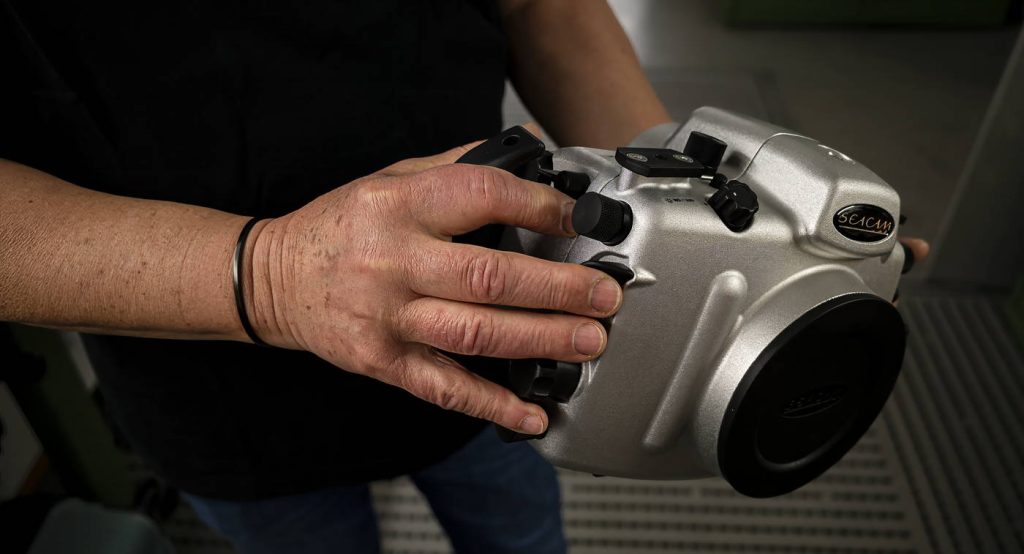
Switching to SEACAM – The Detail about the Details…
My previous careers and my current pursuit of success in underwater photography have all taught me that details really do matter. Not all the time of course, but when that time comes, it’s the details that make the difference.
In underwater photography, the critical details can be distilled into two essential components. Will the equipment work when you need it to (reliability), and can you adjust it quickly when necessary (haptics)? Of the two, reliability is by far the most important. Because great haptics cease to matter if the overall system is not reliable.
Perhaps the best example of the SEACAM’s drive for reliability is the S6 wired strobe connection – which, I must admit, had previously been a source of some mystery to me.
Connecting a strobe to a housing, and therefore through a cable to the hot shoe and the camera, is simultaneously the best way to make that connection and the weakest link.
It’s the best because a direct connection allows for advanced features like High-Speed Sync (HSS) and TTL exposure when required.
It’s also the weakest because the industry-standard Nikonos five-pin connector comes with a history and a set of vulnerabilities.
That connector was originally designed by Nikon in the 1960s to allow strobes to be used with the Nikonos II and III cameras. The first iteration of this cable was a three-pin configuration, since manual exposure was the only option back then.
When TTL (Through The Lens) metering came onto the scene with the Nikonos V in 1984, a five-pin setup was necessary, and it subsequently became the industry standard.
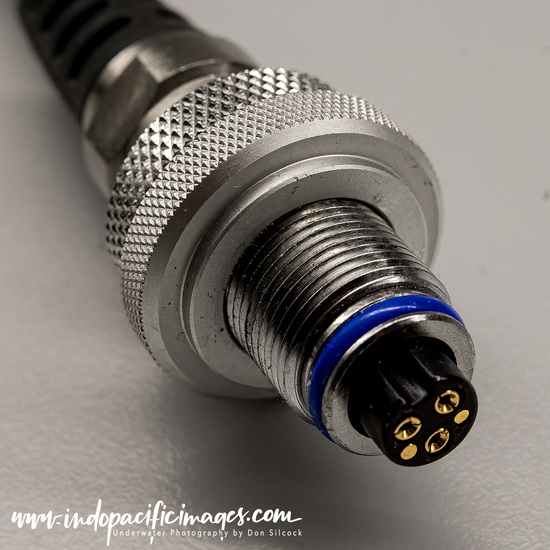
The SEACAM Way
That connector relies on a single O-ring to seal radially and keep seawater out. However, with most housings featuring vertically oriented bulkhead fittings. There’s a tendency for residual seawater droplets to fall into the bulkhead recess when the cable is removed. Which typically initiates corrosion on the spring-loaded connector pins. Utimately that requires the bulkhead to be replaced and, in all probability, the failure will occur at the worst possible time.
I learned the hard way to always dry the connection as best as possible. Then invert the housing before removing a cable and carefully check for any droplets in the recess and on the cable connector. Plus, I always traveled with a spare bulkhead fitting and strobe cable just in case.
SEACAM’s S6 connector represents a significant improvement in design. It adds an extra pin for greater reliability, seals radially with two O-rings, and uses a third O-ring to seal axially.
Moreover, most SEACAM housings have horizontally oriented bulkhead fittings on the side. Thus reducing the risk of water droplets entering the system.
It’s a much smarter design than the old Nikonos standard. And, while nothing is ever 100% foolproof underwater, the S6 connector feels far more robust and reliable.
This emphasis on reliability, particularly in something as critical as a strobe connection, demonstrates SEACAM’s commitment to detail, and it’s what sets them apart.
It’s not just about making the technology work; it’s about making sure it works when it matters most.

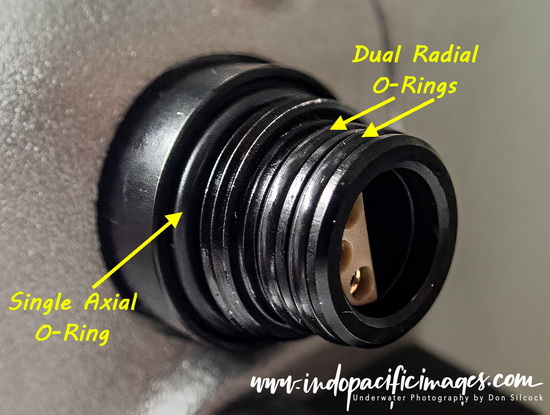
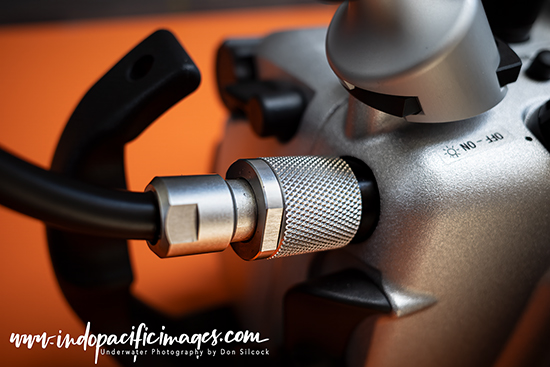
Switching to SEACAM – What Next?
Switching to SEACAM and being formally associated with the company is a huge honour for me. They are the premium underwater photography equipment brand. And their Ambassadors are some of the most talented and inspiring people in the business!
Visiting Voitsberg and learning how the equipment is designed was, for a tech-head like me, truly incredible. The details, commitment, and passion that make it all happen were amazing to see. On the long journey back to Sydney, I realized just how lucky I have been. Not only was I given a complete set of equipment – everything I asked for and a bit more for good luck. But I also had three days with Harald and his team learning how it all works.
Few people can say that, and I decided that I really should document it all. Not because Harald Hordosch asked me to – he didn’t. But because if you are like me and want to move from being a good underwater photographer to a great one, then you need to know more about SEACAM.
This article details my first impressions of SEACAM equipment. And it was written before I used any of the equipment I received in Voitsberg.
Over a year has passed since then. And I have now used that equipment on two extensive trips in the Solomon Islands (reefs and wrecks), Raja Ampat (reefs), Fakarava (sharks), Bikini Atoll (deep wrecks), Dominica (sperm whales) and Anilao (blackwater critters).
The next article will be a one-year review of what I have learned about my SEACAM equipment.
